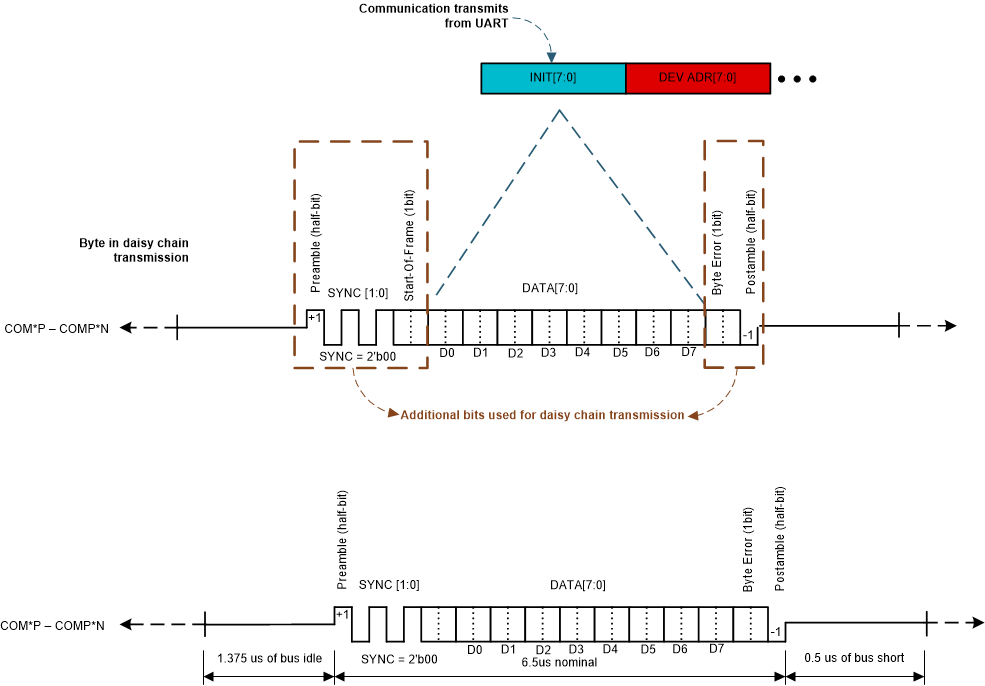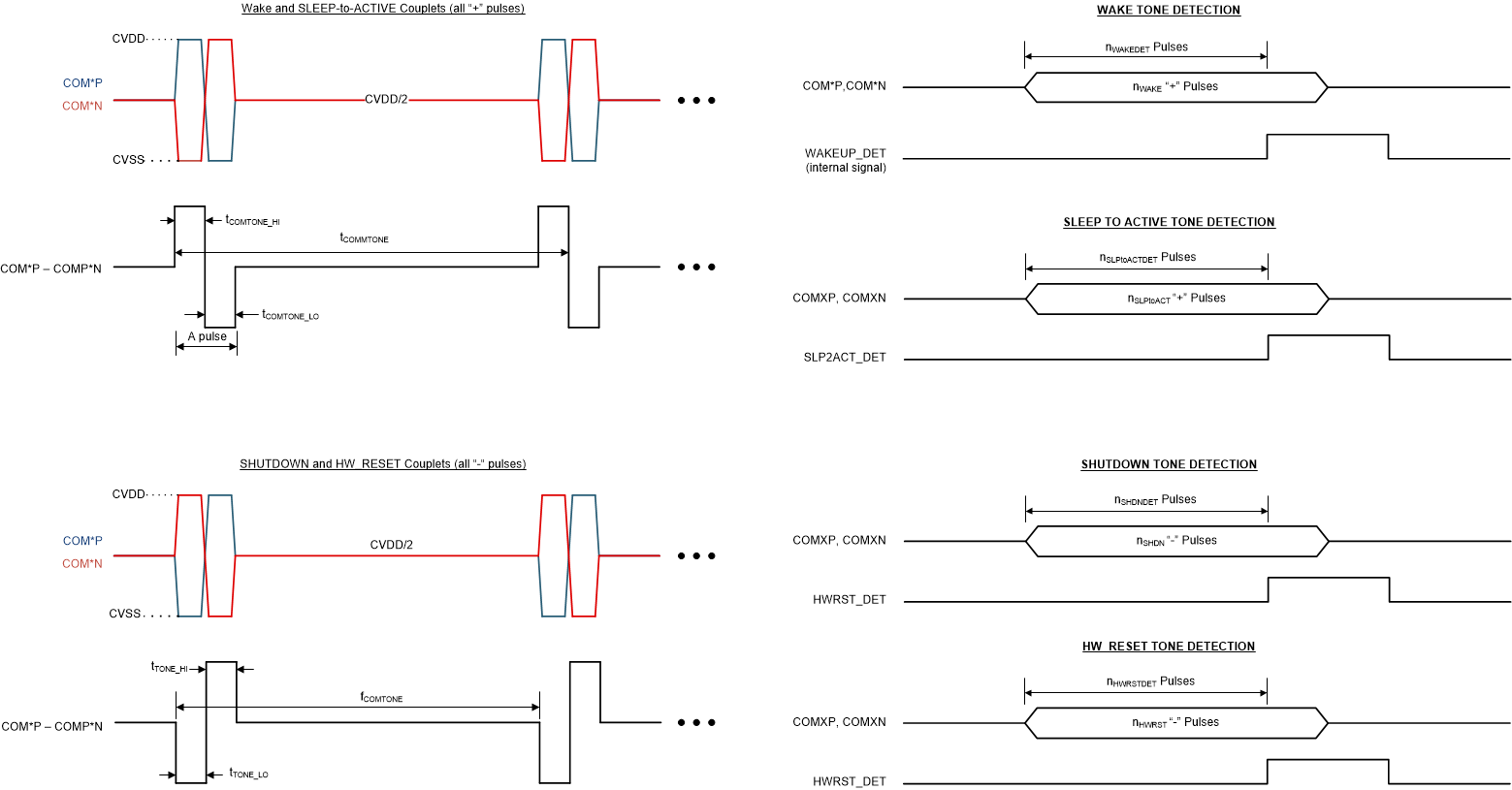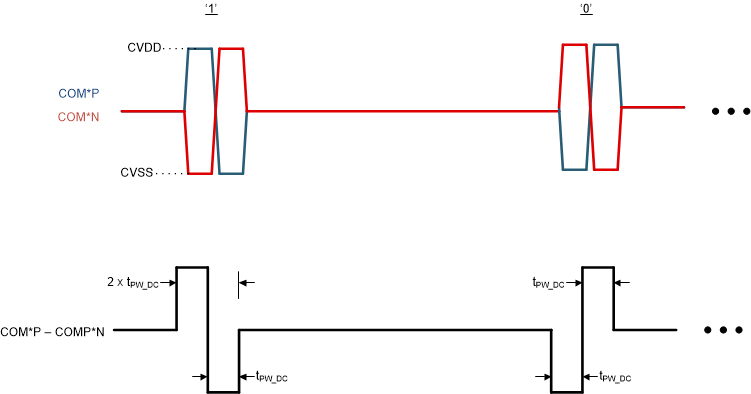-
BQ79616-Q1 Daisy Chain Communications SLVAEP4 October 2023 BQ79600-Q1 , BQ79612-Q1 , BQ79614-Q1 , BQ79616 , BQ79616-Q1 , BQ79652-Q1 , BQ79654-Q1 , BQ79656-Q1
-
BQ79616-Q1 Daisy Chain Communications
- 1
- Abstract
- Trademarks
- 1 Introduction
- 2 Receiver Topology and Common Mode Voltages
- 3 Signal Integrity Requirements
- 4 Debug Fault Registers
- 5 Isolation Types
- 6 Mixed Isolation Circuits using bq79600-Q1
- 7 Ring Architecture
- 8 Noise Immunity and Emissions
- 9 Daisy Chain Cable Selection
- 10References
- IMPORTANT NOTICE
BQ79616-Q1 Daisy Chain Communications
Abstract
This application note is designed to demystify the bq7961X daisy chain communications interface when stacking multiple devices for high-voltage applications. The goal is to provide a deeper understanding of the protocol details when evaluating the device. Additionally, this report provides recommended isolation components and typical application practices for system designs to take full advantage of designing with this interface.
Trademarks
All trademarks are the property of their respective owners.
1 Introduction
The daisy chain communication interface on the bq7961X family of devices is a proprietary protocol developed by Texas Instruments. It is designed using differential signaling to minimize Electro-Magnetic Susceptibility (EMS) and strengthen Bulk Current Injection (BCI) immunity. The differential communication transmits complement data on the COM*P and COM*N pins, respectively. This interface is bi-directional and half duplex, and, therefore, has a transmitter (TX) and receiver (RX) on the COMH (high -side) and COML (low-side) interfaces.
The device supports the use of transformers or capacitors to electrically isolate the signals between devices in the stack. There are configurations where the devices are physically located on the same board or located in entirely separate packs connected with twisted pair wiring. For applications that have multiple devices on the same PCB, a single capacitor is connected between the COMH/L pins of the devices. For extremely noisy environments and stringent EMI/EMC requirements, additional filtering may be necessary. For devices that are separated by cabling, additional isolation components are used.
 Figure 1-1 Daisy Chain Byte Level
Definition
Figure 1-1 Daisy Chain Byte Level
Definition Figure 1-2 Communication Tones
Figure 1-2 Communication Tones Figure 1-3 Daisy Chain Bit Level
Definition
Figure 1-3 Daisy Chain Bit Level
Definition